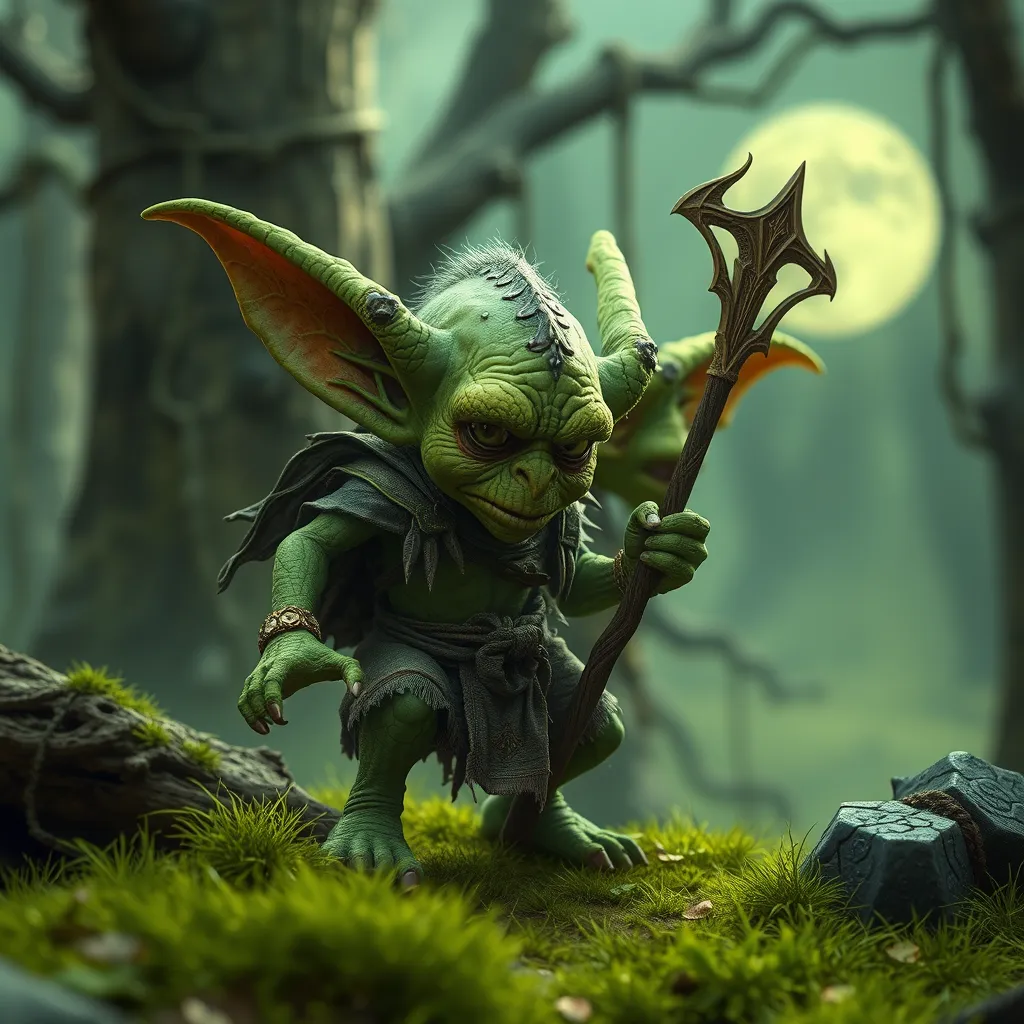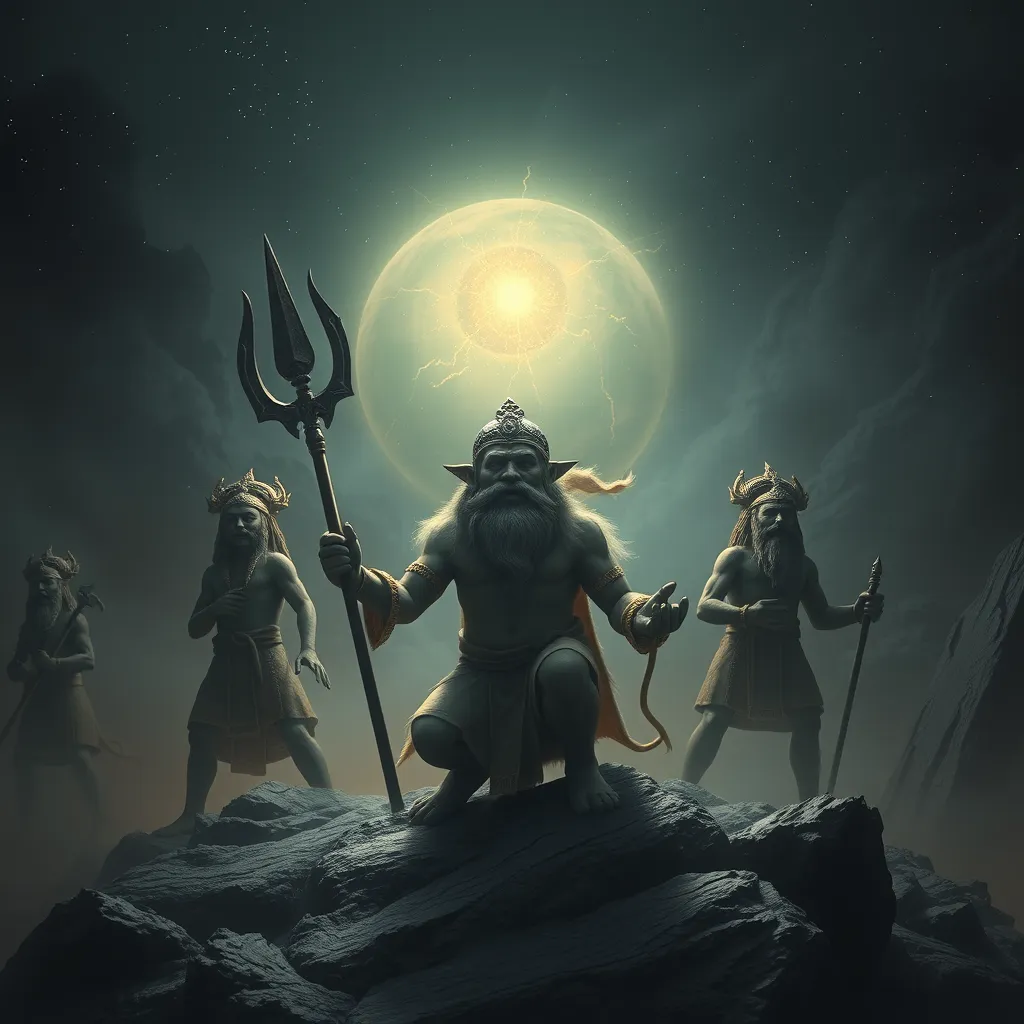Whispers from the Mesa: Diné Tales of Skinwalkers and their Origins
I. Introduction
In Diné culture, Skinwalkers are a central figure in a rich tapestry of folklore that intertwines the spiritual and the earthly. Defined as powerful witches capable of transforming into various animals, Skinwalkers embody a complex blend of fear, respect, and caution. Their tales serve not only as cautionary stories but also as reflections of deeper cultural beliefs and values.
The tradition of storytelling holds profound significance among the Diné, as it facilitates the transmission of knowledge, morals, and cultural identity from one generation to the next. Through these narratives, the Diné people preserve their history, spirituality, and connection to the land.
This article aims to explore the origins, nature, and contemporary significance of Skinwalker legends within the Diné community, providing insight into how these stories shape cultural identity and reflect the complexities of Diné spirituality.
II. Historical Context of Diné Beliefs
Diné cosmology is deeply rooted in a spiritual understanding of the world, where every element of nature is interconnected. This worldview emphasizes harmony, balance, and the reverence of all living things. Mythology plays a crucial role in this belief system, offering explanations for natural phenomena and human experiences.
Skinwalker tales have historical roots that date back centuries, with accounts varying across different Diné clans. These stories often serve as moral lessons, warning against the misuse of power and the consequences of straying from cultural values.
III. The Nature of Skinwalkers
Skinwalkers are often described as malevolent beings who use their shapeshifting abilities to harm others. They are believed to possess the power to transform into various animals, including wolves, coyotes, and birds. This transformation is not merely physical; it also symbolizes a deeper connection to the spiritual realm.
- Differences from Other Supernatural Beings: Unlike benevolent spirits or protective deities, Skinwalkers are associated with witchcraft and dark intentions.
- Cultural Interpretations: Skinwalker behavior is often viewed through a lens of caution, representing the fears and anxieties of the community regarding moral decay and the misuse of knowledge.
IV. Origins of Skinwalker Legends
The origins of Skinwalker legends are steeped in traditional narratives that explain their emergence as a consequence of human transgression. These stories often recount the tale of a person who, in seeking power, turns to witchcraft, ultimately leading to their transformation into a Skinwalker.
There is a notable connection between Skinwalkers and witchcraft within Diné culture. The belief that certain individuals can acquire supernatural powers through malevolent means underscores the community’s views on morality and ethics.
Additionally, Skinwalker myths may have been influenced by neighboring cultures, integrating elements of various indigenous beliefs into the Diné narrative framework.
V. Skinwalker Encounters and Experiences
Personal accounts of Skinwalker encounters are prevalent within the Diné community, with many individuals sharing chilling stories of sightings or experiences that evoke fear and uncertainty. These narratives often serve as cautionary tales, reminding listeners to respect the boundaries of the natural and spiritual worlds.
As modernity encroaches upon traditional beliefs, the influence of contemporary society poses challenges to the preservation of these tales. However, many Diné people continue to uphold their cultural narratives, finding ways to adapt them to current contexts while retaining their core messages.
The role of fear in Skinwalker narratives cannot be understated. These tales often evoke a sense of unease, reflecting the community’s deep-seated fears about the unknown and the consequences of unethical behavior.
VI. Symbolism and Themes in Skinwalker Tales
Skinwalker tales are rich with symbolism, exploring themes of transformation, duality, and morality. The ability of Skinwalkers to shift forms serves as a metaphor for the complexities of identity and the potential for both good and evil within individuals.
- Transformation and Duality: Skinwalkers symbolize the duality of human nature—capable of both creation and destruction.
- Moral Lessons: Embedded within these stories are moral teachings that caution against the misuse of power and the importance of adhering to cultural values.
- Identity and Culture: Skinwalkers reflect broader issues of identity within the Diné community, serving as a reminder of the importance of cultural heritage and the dangers of losing one’s way.
VII. Contemporary Perspectives on Skinwalker Lore
In today’s society, Skinwalker tales are often perceived through the lens of curiosity and entertainment, especially in media and popular culture. However, it is crucial to approach these stories with respect for their cultural significance and the beliefs of the Diné people.
The portrayal of Skinwalkers in films, books, and television often distorts the original narratives, leading to misunderstandings and cultural appropriation. This highlights the importance of preserving Diné cultural narratives and ensuring that they are shared authentically and respectfully.
VIII. Conclusion
The legacy of Skinwalker tales endures within Diné culture, serving as a vital link to the past and a guide for future generations. These stories encapsulate the complexities of Diné beliefs and the importance of ethical conduct, identity, and respect for the natural world.
As we engage with Indigenous narratives, it is imperative to approach them with an understanding of their cultural context and significance. Skinwalker tales are not just stories; they are a testament to the resilience and wisdom of the Diné people.
In conclusion, folklore plays a critical role in shaping cultural identity, and by honoring these narratives, we contribute to the preservation of rich traditions and the acknowledgment of Indigenous perspectives.



